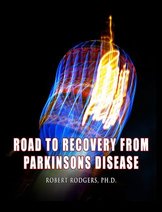I believe that Candida infection is a huge predisposing factor to Parkinsons, yet it might not be enough to trigger the onset of Parkinsons. Maybe you need another factor that will favor the development of Parkinsons; that will be the straw that breaks the camel’s back.
My guest on Parkinsons Recovery Radio is Lidia Epp who discusses the causal connection between candida and Parkinsons disease. She is the co-author of the publication – Chronic polystemic candidiasis as a possible contributor to onset of idiopathic Parkinson’s disease. The abstract of her article is posted below.
Lidia explains how the Parkinson’s disease of her husband changed the course of her life and eventually lead her to the in-depth study of causes of Parkinsons Disease. A molecular biologist by profession, Lidia researched scientific data and came to a conclusion that candida is one of the factors that cause symptoms of Parkinson’s.
In my husbands case that was the aspartame, but it could be different things for different people. For instance, farmers that are exposed to pesticides in huge quantities and that could be a very large contributing factor. All our bodies are different; our weak points are in different places. Parkinsons is a very general description of symptoms that can be caused by any number of things.
Lidia Epp
Click on the arrow below to hear my interview with Lidia Epp on Parkinsons Recovery Radio:
Lidia Epp is one of the eleven contributors to Pioneers of Recovery.
Abstract of the Article that explains the scientific connection between candida and Parkinsons disease
Bratisl Lek Listy. 2006;107(6-7):227-30. Chronic polysystemic candidiasis as a possible contributor to onset of idiopathic Parkinson’s disease.
Abstract
The underlying cause of Parkinson’s disease is still enigma. Several mechanisms have been implicated in the etiopathogenesis of PD including oxidative damage, environmental toxins, genetic predisposition, and accelerated aging.
Recent research suggests that salsolinol, a derivate of dopamine, is an important contributing factor. In the presence of acetaldehyde dopamine is converted into salsolinol, a neurotoxin involved in apoptosis of dopaminergic neurons. Increased production of acetaldehyde is associated with chronic polysystemic candidiasis (CPC).
Chronically elevated levels of acetaldehyde in patients with CPC might participate in the formation of salsolinol and its metabolites in the brain contributing to the destruction of dopaminergic cells in substantia nigra. Clinical mental symptoms of PD often correspond with the mental manifestations of CPC.
Robert Rodgers PhD
Founder 2004
Parkinsons Recovery






Leave a Reply